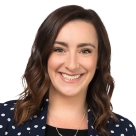An online course at the University of Alberta that explores Indigenous histories in Canada has seen a massive uptick in enrolment following the horrific discovery of the remains of 215 Indigenous children buried in unmarked graves at a residential school in Kamloops, B.C.

The U of A’s Faculty of Native Studies’ Indigenous Canada course has seen new sign-ups double from the week before.
Last week, about 1,000 new students signed up for the course, which the U of A said it pretty average. On June 2, the university said the number of new students had jumped to around 3,500. By June 6, the university said about 39,000 people at signed up the previous week.
The 12-lesson, massive open online course (MOOC) explores key issues facing Indigenous peoples today from a historical and critical perspective highlighting national and local Indigenous-settler relations.
“I think education is really the key to all of this as we journey into the next era of reconciliation in this country,” said Dr. Crystal Gail Fraser, an assistant professor in the U of A’s Faculty of Native Studies.
“The course if just a fantastic way to learn about Indigenous histories and I encourage everyone to register for it… start a group, work with your co-workers, work on it with your friends, have weekly discussions.”

The increase in interest in the program comes days after the remains of 215 children were found buried at the former Kamloops Indian Residential School last week. The Tk’emlups te Secwepemc First Nation said last week that the remains were found by a ground-penetrating radar specialist.
Not only has Fraser researched the history of Indian Residential Schools for the past decade, she has a personal connection to the institutions: her grandmother was institutionalized in the residential school in Aklavik, N.W.T., and her mother at Grollier Hall in Inuvik.
“I certainly also would have been institutionalized at Grollier Hall had I lived in one of the smaller communities,” she said.

Get daily National news
“Especially as I’m raising a young family, all of these issues and of course, the tragedy of the 215 children that we learned about a week ago, has really prompted moments of some deep reflection and also the amount of research that’s still needed.”
- Officials stress Calgarians must save water after Bearspaw main break sees no drop in usage
- Yukon-Alaska border rocked by 3 earthquakes in final hours of 2025
- Snowmobiler dies in avalanche in Rocky Mountains in northeastern B.C.
- Canadians ring in 2026 with ‘invigorating’ polar plunges across the country
In the days since the discovery, there have been calls from across the country and right here in Alberta to rename schools, train stations and other public places that are named after the architects of the residential school system.
On Thursday, Mayor Don Iveson joined the call. He will bring forward a motion to city council Monday to immediately remove reference to Grandin at the city’s LRT Station, on civic signage, as well as in the audible LRT announcements. He is also asking that the mural depicting Grandin in the LRT station be covered with orange “at earliest opportunity.”
The station is named after Bishop Vital-Justin Grandin, an early advocate of the residential school system who lobbied the Canadian government to fund residential schools in the late 1800s.

The university’s Indigenous Canada course is free to the public, but can also be taken for a fee as part of a university degree. A third option, with a smaller fee, gives the participant a certificate.
Topics covered in the course include:
- the fur trade and other exchange relationships
- land claims and environmental impacts
- legal systems and rights
- political conflicts and alliances
- Indigenous political activism
- contemporary Indigenous life, art and its expressions
“You go through various modules learning the history and contemporary issues in Canada,” Fraser said.
150 everyday acts toward reconciliation
The professor acknowledged the commitment required with a course like this, but said there are a number of tangible everyday acts people can take in their steps toward reconciliation.
As part of Canada 150, Fraser and a colleague put together a list of 150 simple acts Canadians can take to engage in reconciliation.
“It encourages you to do it with your family, with your co-workers and I know a lot of people have already engaged with it and we’re grateful for that.”
One of the acts on the list, for example, encourages people to reflect on their language.
“When you refer to your group of friends, don’t call it a tribe. When you call a meeting at work, it is not a powwow. When you are thinking about Indigenous nations, if you know what they’re actually called — for instance, I’m Gwichya Gwich’in — refer to them by their proper name instead of a blanket term like Indigenous or Aboriginal.”
Fraser, who has a five-year-old daughter, said she’s also been reading stories with her family about residential schools. For children, she recommends “My Name Is Seepeetza” and “Fatty Legs.”
For adults, she said there are a number of scholarly history books available through local libraries, but also pointed to a couple of memoirs and autobiographies, including “The Education of Augie Merasty” and “Porcupines and China Dolls.”
The university’s Indigenous Canada course also received a boost last summer, after Canadian actor and Schitt’s Creek star Dan Levy took the course and encouraged his followers to do the same. The University of Alberta said 50,000 additional people signed up for the course the week Levy enrolled.
More information on the U of A course can be found on the university’s website.
People interested in supporting survivors of residential schools can also find more information through the National Centre for Truth and Reconciliation as well as the Legacy Hope Foundation.
Anyone experiencing pain or distress as a result of their residential school experience can access this 24-hour, toll-free and confidential National Indian Residential School Crisis Line at 1-866-925-4419.








Comments